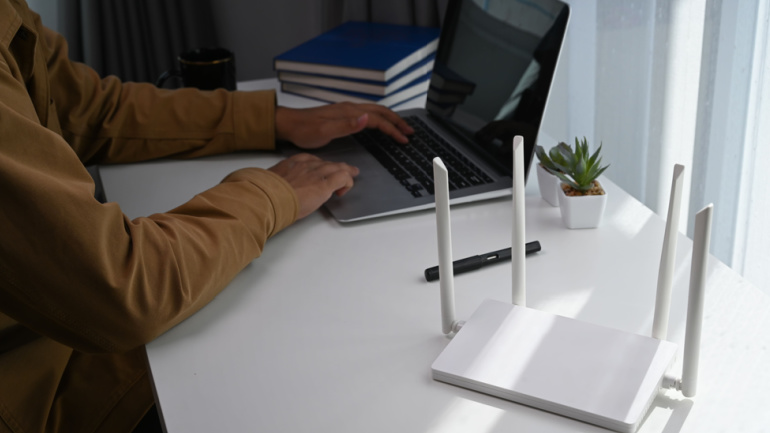CityFibre teams up with four civil engineering firms to aid challenging fibre infrastructure projects in the UK, courtesy of recent government funding. This alliance hastens fibre infrastructure development across several counties, marking Cambridgeshire as the initial rollout area. Noteworthy, however, is the lack of equivalent high-speed, Gigabit-capable infrastructure in these areas before. Although progress has been steady with Project Gigabit, this new venture signals a grand advancement towards achieving nationwide high-speed connectivity.
Reliance Jio’s JioAirFiber, the breakthrough fixed-wireless access service, not only offers high-speed broadband at competitive prices, but also ventures to facilitate digital entertainment with a complimentary set-top box. With ambitions to reach 100 million customers across India, Jio appears poised to disrupt the market yet again, closely mimicking its successful 4G network rollout. Its competitors watch with bated breath, poised for an impending shake-up.
“Project Gigabit”, the UK government’s £2 billion initiative, aims to expand high-speed broadband in hard-to-reach communities. With a vision of future-proofing Britain’s connectivity, the project seeks to connect 80% of the nation by 2025. However, ensuring equal internet access brings pressing questions, such as the cost-effective efficiency of Low Earth Orbit satellites and balancing 4G and 5G network enhancements to avoid inadvertent digital inequality.
UK operator VMO2’s recent innovation eliminates network dead zones across a 126-acre farm, combining telecom and agriculture to test the impact of digital technology on rural farming. This collaboration enables real-time tracking of high-value items, prompt alerts on farm security breaches, and efficient crop health monitoring, thereby potentially boosting farm productivity and significantly reducing losses.
Lyntia and AI tech start-up Vyntelligence are collaborating to transform Spain’s fibre network deployment, aiming to improve service quality and customer experience. This partnership embraces digitalisation, creating an interactive platform between Lyntia, fibre deployment partners, auditors, and contractors, thus speeding up the delivery of high-quality services. The joint venture has already accelerated customer quality control processes by a significant 33%, offering a glimpse into the future of fibre connectivity.
The UK’s popular Lake District, plagued by poor mobile service, is set for an upgrade with EE boosting its masts’ performance. The upgrades, part of the ambitious Shared Rural Network program, will improve coverage across less-accessible communities, attempting to achieve 95 percent UK coverage by 2025. While enhancing connectivity in the countryside, meeting an impending 2G and 3G network phase-out, these improvements respect the natural landscape and cater to rural communities’ unique needs. This project is hailed for supporting local lifestyles, businesses, tourism and potentially enabling fresh opportunities.
Navigating the ‘Right First Time’ operations in FTTP networks, especially in a highly competitive UK landscape, can be challenging. The advent of computed vision presents a transformative solution, using machine learning to detect anomalies and streamline operations. This technology raises the bar for operational standards, while reducing time, cost and errors, driving forward the future of FTTP operations in the UK.
A surprising surge in UK home broadband speeds reveals unexpected players in the game, with cable services outpacing full fibre. Yet, amid the rise of lightning-fast download speeds, the upload band still sees full fibre reigning supreme. Noticeably, cable packages prove their worth even under the gruelling test of peak hours. Nevertheless, experts advise not to overlook service quality when choosing broadband. A glimpse into the changing landscape of broadband services shows an intriguing volatility that leaves room for industry alterations and subscriber adaptation.
Prominent UK telecom companies like BT, VMO2, and Vodafone have been selected beneficiaries of government funding for research into Open RAN technology. Innovative projects, with a focus ranging from energy efficiency to security, will share in the £88 million ($121 million) funding. The main goal is to figure out whether Open RAN can rival traditional RAN, especially in high-traffic areas and rural deployments, in terms of cost, reliability and energy consumption.
OneWeb’s constellation of low Earth orbit (LEO) satellites will enhance network coverage for Softbank, particularly in challenging regions. The move aligns with Softbank’s ‘Ubiquitous Network’ strategy, which unifies diverse non-terrestrial network (NTN) solutions to expand digital services. Besides its surprise partnership with SpaceX’s Starlink, Softbank continues to boost its stake in OneWeb, supporting its Japanese launch and integration into the Ubiquitous Network.













